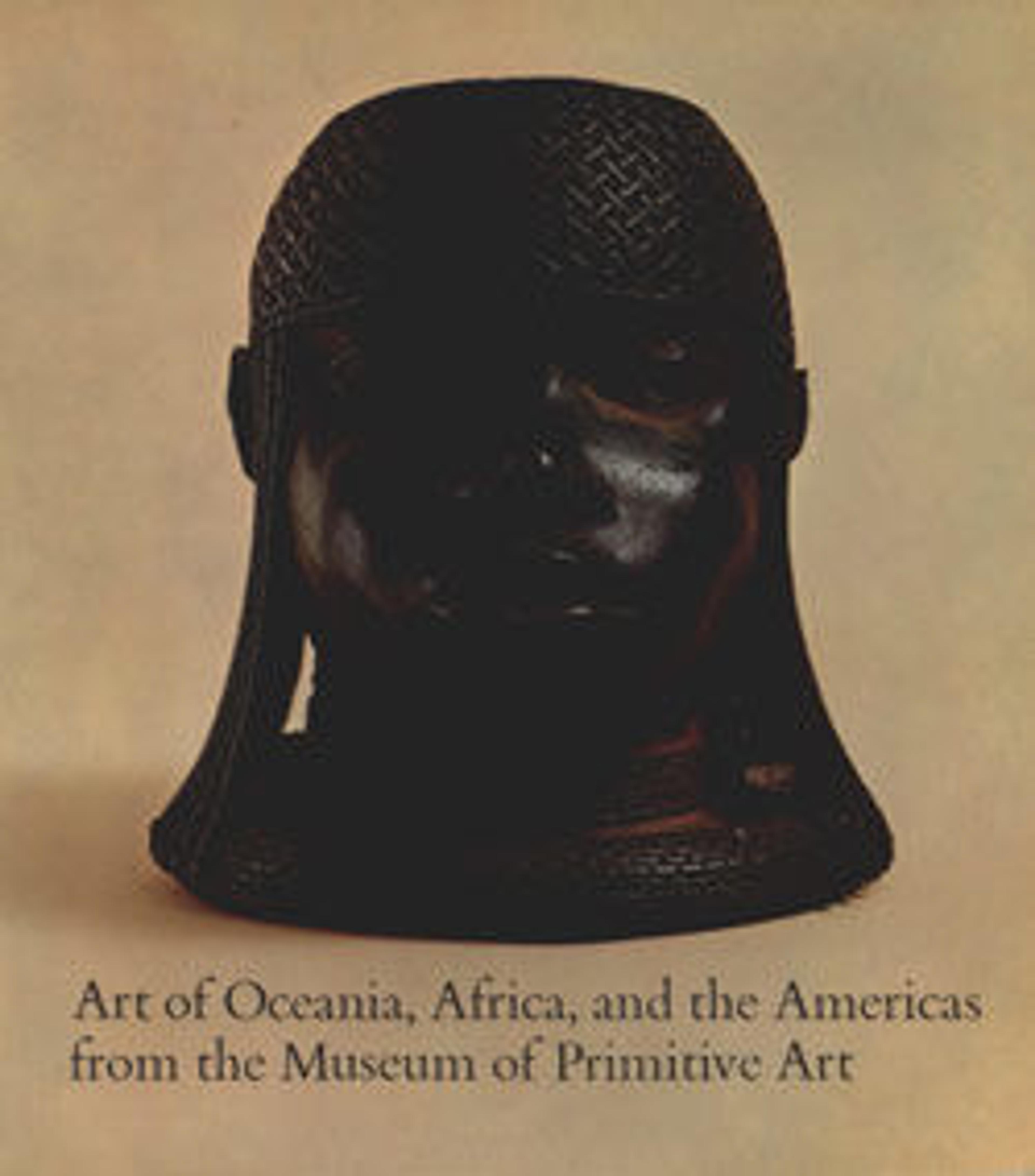Rain god pendant
This small, globular pendant depicts a male figure wearing a folded paper headdress studded with three round jewels. On his face is an elaborate mask featuring a toothy grimace with exposed fangs and large, glaring eyes. His twisting, heliacal nose resembles a serpent’s body, with each end unraveling to form a pair of arched eyebrows. A similar motif decorates a ceramic vessel of Tlaloc, the rain god, interred long ago by the Aztecs in the Great Temple at Tenochtitlan (modern-day Mexico City). Whether in the form of nosepieces, crowns, or elaborate turquoise pectorals, two-headed serpents are abundant in Mesoamerican art and are commonly allied with concepts of water, fertility, and an aquatic afterlife.
Like the Mixtec serpent pendant (1978.412.117), this miniature figure is made of greenstone and perforated for suspension. Carved on a diminutive scale, the shape of the figure’s body is conveyed with only a few brief incisions, thereby reducing it to the fewest details needed in order to identify it as a water deity. Additionally, the green hue of the stone was itself symbolic of water, feathers, fecundity, and all things precious.
William T. Gassaway, 2014–15 Sylvan C. Coleman and Pamela Coleman Fellow
Like the Mixtec serpent pendant (1978.412.117), this miniature figure is made of greenstone and perforated for suspension. Carved on a diminutive scale, the shape of the figure’s body is conveyed with only a few brief incisions, thereby reducing it to the fewest details needed in order to identify it as a water deity. Additionally, the green hue of the stone was itself symbolic of water, feathers, fecundity, and all things precious.
William T. Gassaway, 2014–15 Sylvan C. Coleman and Pamela Coleman Fellow
Artwork Details
- Title: Rain god pendant
- Artist: Mexica artist(s)
- Date: 1325–1521 CE
- Geography: Mexico, Mesoamerica
- Culture: Mixtec
- Medium: Greenstone
- Dimensions: H. 2 1/2 x W. 2 1/8 x D. 1 1/4 in. (6.4 x 5.4 x 3.2 cm)
- Classification: Stone-Ornaments
- Credit Line: The Michael C. Rockefeller Memorial Collection, Bequest of Nelson A. Rockefeller, 1979
- Object Number: 1979.206.1035
- Curatorial Department: The Michael C. Rockefeller Wing
More Artwork
Research Resources
The Met provides unparalleled resources for research and welcomes an international community of students and scholars. The Met's Open Access API is where creators and researchers can connect to the The Met collection. Open Access data and public domain images are available for unrestricted commercial and noncommercial use without permission or fee.
To request images under copyright and other restrictions, please use this Image Request form.
Feedback
We continue to research and examine historical and cultural context for objects in The Met collection. If you have comments or questions about this object record, please contact us using the form below. The Museum looks forward to receiving your comments.
